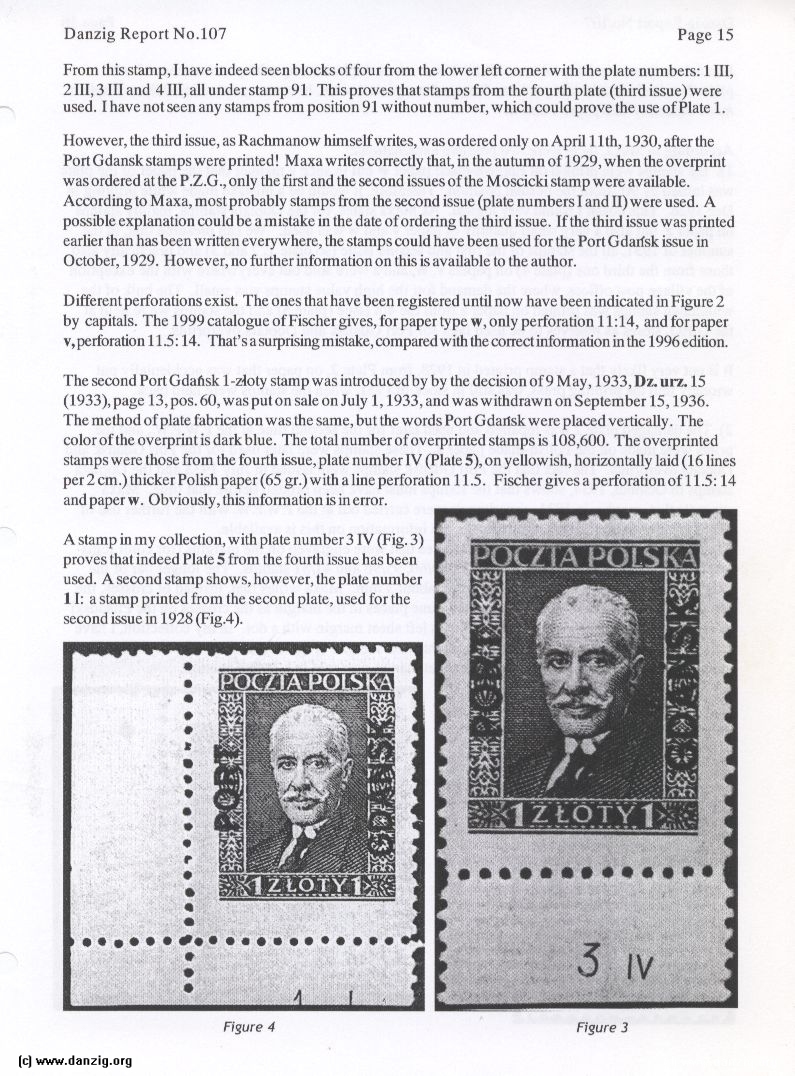
From this stamp, 1 have indeed seen blocks of four from the lower left corner with the plate numbers: 1 III, 2111,3 III and 4111, all under stamp 91. This proves that stamps from the fourth plate (third issue) were used. I have not seen any stamps from position 91 without number, which could prove the use of Plate 1.
However, the third issue, as Rachmanow himself writes, was ordered only on April 1 I th, 1930, after the Port Gdansk stamps were printed! Maxa writes correctly that, in the autumn of 1929, when the overprint was ordered at the P.Z.G., only the first and the second issues of the M oscicki stamp were available. According to M axa, most probably stamps from the second issue (plate numbers I and II) were used. A possible explanation could be a mistake in the date of ordering the third issue. If the third issue was printed earlier than has been written everywhere, the stamps could have been used for the Port Gdarfsk issue in October, 1929. Howcver, no further infonnation on this is available to the author.
Different perforations exist. The ones that have been registered until now have been indicated in Figure 2 by capitals. The 1999catalogueofFischergivcs, forpapertype w,only perforation 11:14, and forpaper v, perforation 11.5: 14. That’s a surprising mistake, compared with the correct information in the 1996 edition.
The second Port Gdañsk 1-zloty stamp was introduced by by the decision of 9 May, 1933, DL ui-i. 15 (1933), page 13, pos. 60, was put on sale on July 1, 1933, and was withdrawn on September 15, 1936. The method of plate fabrication was the same, but the words Port Gdask were placed vertically. The color of the overprint is dark blue. The total number of overprinted stamps is 1O$,6( 0. The overprinted stamps were those from the fourth issue, plate number IV (Plate 5), on yellowish, horizontally laid (16 lines per 2cm.) thicker Polish paper (65 gr.) with a line perforation 11.5. Fischer gives a perforation of 11.5: 14 and paper w. Obviously, this information is in error.
A stamp in my collection, with plate numbcr3 IV (Fig. 3) proves that indeed Plate 5 from the fourth issue has been used. A second stamp shows, however, the plate number 11: a stamp printed from the second plate, used for the second issue in 1928 (Fig.4).
Danzig Report Vol. 1 - Nr. 107 - April - May - June - 2000, Page 16.
Hits: 3147
Added: 28/07/2015
Copyright: 2025 Danzig.org

